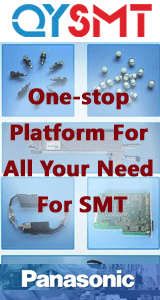Dear All,
We are a medium sized Electronic manufacturing company manufacturing computer motherboards and Telecommunication products. We have a big debate going on within our company regarding the defect rate measurement technique.
At present we are calculating yield rates at all the stages i.e paste printing, pre-reflow, Post Reflow, Pre-Wave and Post- Wave Inspection satges. We calculate that as follows.
No. of defective boards x 100 ----------------------- No. of boards inspected
Now, using this method, I am listing below two cases which complicate the situation.
e.g. If out of 100 boards 10 boards fail because of one point touch-up the yield rate is 90%, which is considered to be a pretty bad situation. On the other hand if only 3 boards fail and require touch up at more than 100 points the yield rate would be 97%, which reflects a better situation, though in the later case I am doing much more re-work.
Now, the other alternative is to calculate the defect rate in PPM. i.e.
No. of defective joints x 1000000 ------------------------- Total No. of Joints inspected
Consider a case below, that I am doing 1 point touch-up on 100% of the boards. The PPM value would be very low (Happy Situation) since I am touching up only one point but the yield is 0% (Unacceptable).
Can somebdy help me decide which method should be used to take care of both the requirements. Also, please elaborate on the method used at your end and average Yield/PPMs at Post reflow/Post Wave Inspection stages.
Thanks & Regards Vinesh Gandhi
reply »
![]()
![]() Dear All,
We are a medium sized Electronic manufacturin...
- Jul 05, 1999
by
Dear All,
We are a medium sized Electronic manufacturin...
- Jul 05, 1999
by
![]()
![]() | Dear All,
|
| We are a medium sized Electronic manufa...
- Jul 05, 1999
by
JohnW
| Dear All,
|
| We are a medium sized Electronic manufa...
- Jul 05, 1999
by
JohnW
![]()






